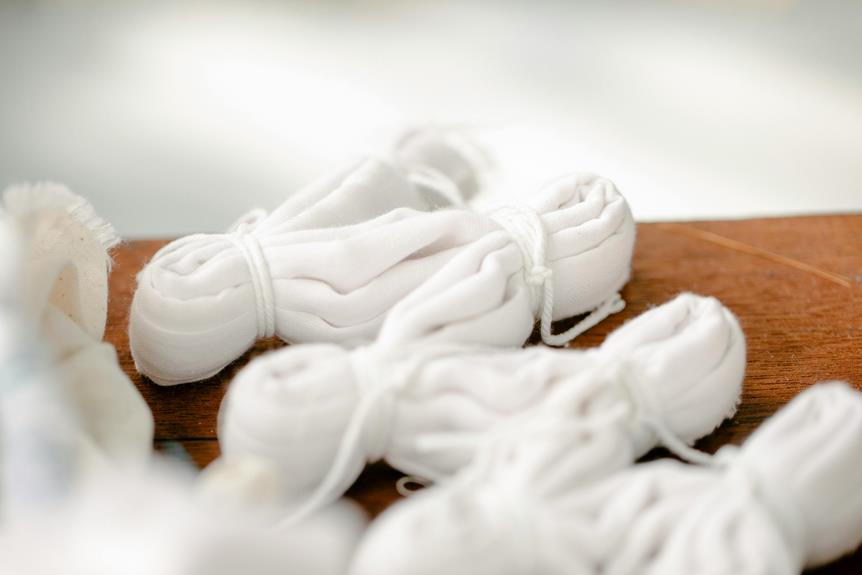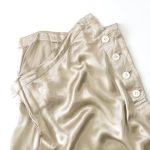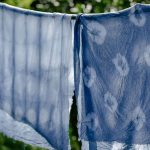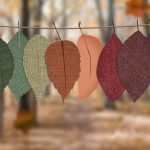When you're ready to sew with jacquard fabric, it's essential to recognize its unique characteristics, including its intricate patterns and tendency to fray. You'll want to start by preparing your fabric properly, ensuring you avoid common pitfalls that can lead to frustration. From selecting the right tools to mastering cutting techniques, each step plays a critical role in achieving a polished finish. But what specific techniques should you employ to handle jacquard's complexities? Understanding these nuances will elevate your project to the next level.
Table of Contents
Understanding Jacquard Fabric
Jacquard fabric is a richly textured material known for its intricate patterns, making it a popular choice for everything from home decor to fashion. When you choose Jacquard, you're opting for a fabric that often features designs woven directly into it, rather than printed on the surface. This weaving technique creates depth and dimension, elevating your sewing projects.
You'll find Jacquard in various fibers, including cotton, silk, and polyester, which means you can select the right type for your specific needs. Cotton Jacquard is great for casual wear, while silk Jacquard lends a touch of elegance to formal attire. However, keep in mind that the weight and drape of Jacquard can vary significantly, so consider your project before diving in.
When working with Jacquard, you might notice it frays more easily than other fabrics. To combat this, use a sharp needle and a stitch length that accommodates its unique texture. Pre-washing the fabric is also a wise choice, as it helps prevent shrinkage later on. Understanding these aspects will ensure your sewing experience is both enjoyable and successful.
Preparing Your Workspace
Before you start sewing, it's essential to organize your workspace to create an efficient and comfortable environment. A well-prepared space can help you focus on your project and minimize distractions.
Start by clearing your work surface of any clutter. Make sure you have sufficient space to spread out your jacquard fabric and tools. Next, consider the lighting. Good lighting is crucial for seeing the intricate details of jacquard patterns, so position your sewing machine near a bright light source or use a task lamp.
To further enhance your workspace, gather all necessary supplies. Here's a helpful checklist to keep your space organized:
| Item | Purpose |
|---|---|
| Cutting mat | Protects the surface while cutting fabric |
| Ruler | Ensures accurate measurements |
| Fabric scissors | Cuts through the jacquard fabric cleanly |
| Pins & pin cushion | Holds fabric pieces together while you sew |
With everything organized, you'll find it easier to dive into your sewing project and enjoy the creative process.
Choosing the Right Tools
When you're ready to sew with jacquard fabric, having the right tools is crucial for a smooth experience.
You'll need essential sewing tools tailored to this unique material, along with effective fabric preparation techniques to ensure your project turns out beautifully.
Let's explore what you need to get started!
Essential Sewing Tools
What tools do you need to effectively work with jacquard fabric?
First, invest in a good pair of fabric scissors. These should be sharp and precise to handle the thickness and texture of jacquard.
Next, use a rotary cutter and mat for straight, clean cuts, especially if you're working with intricate patterns.
You'll also want quality pins or clips to hold your fabric together securely. Jacquard can be bulky, so clips are often more effective than pins.
A walking foot for your sewing machine is essential too, as it helps prevent slipping and ensures even feeding of the fabric.
Don't forget about a seam ripper. Mistakes happen, and this tool will save you time and frustration when you need to undo stitches.
Finally, keep a tailor's chalk or fabric marker handy for marking your cutting lines or pattern pieces.
With these tools in your arsenal, you'll be well-equipped to tackle jacquard fabric.
Choosing the right tools makes a significant difference in achieving professional-looking results in your sewing projects. Happy sewing!
Fabric Preparation Techniques
Preparing jacquard fabric properly is crucial for achieving the best results in your sewing projects. To ensure your fabric behaves well during sewing, you'll need to choose the right tools and techniques. Start by pre-washing the fabric to prevent any shrinkage after your project is completed. Use a gentle detergent and a cool wash cycle.
Next, press the fabric using a steam iron set to the appropriate heat level for jacquard, usually a medium setting. This helps eliminate any wrinkles and makes cutting easier.
Here's a quick reference table to guide you on the essential tools for fabric preparation:
| Tool | Purpose |
|---|---|
| Fabric Scissors | For clean, accurate cutting |
| Tailor's Chalk | For marking fabric without damage |
| Iron & Ironing Board | For pressing and smoothing fabric |
| Measuring Tape | For accurate measurements |
Cutting Jacquard Fabric
Cutting jacquard fabric requires you to handle it carefully, as its intricate patterns can easily shift or distort during the process.
To get started, lay the fabric out on a large, flat surface, ensuring it's wrinkle-free and stable. Use a rotary cutter or sharp fabric scissors for clean edges, as dull blades can snag the fibers.
Before cutting, always measure twice to avoid mistakes. Align your pattern pieces with the fabric's design, making sure the motifs are positioned correctly. You may want to use weights or pins to secure the fabric and prevent it from moving. If your jacquard has a directional pattern, take extra care to cut all pieces in the same direction.
Consider using a cutting mat underneath to protect your work surface and ensure precise cuts. If the fabric has a tendency to fray, you might want to finish the edges immediately after cutting. This will help maintain the integrity of your pieces as you move on to sewing.
Lastly, keep your workspace organized, so you can easily find everything you need as you cut your jacquard fabric.
Sewing Techniques for Jacquard
When sewing with jacquard fabric, proper preparation is key to achieving the best results.
You'll want to focus on specific stitching techniques that complement its unique texture and structure.
Let's explore these essential tips to ensure your project turns out beautifully.
Fabric Preparation Tips
Jacquard fabric's unique texture requires careful handling to ensure your project turns out beautifully. Before you start sewing, pre-wash the fabric to remove any sizing or chemicals. Use a gentle cycle and cold water to avoid shrinking or damaging the intricate patterns. After washing, lay the fabric flat to dry or tumble dry on low heat. Iron it on a low setting with a pressing cloth to prevent scorching.
Next, you'll want to stabilize your fabric. Jacquard can stretch or shift while you're working, so consider using a lightweight fusible interfacing. Cut it to the same size as your fabric pieces and fuse it according to the manufacturer's instructions.
When cutting your fabric, use sharp scissors or a rotary cutter for clean edges. Always cut with the pattern in mind, ensuring you align it properly to maintain the design's integrity.
Lastly, always test your sewing setup on a scrap piece of fabric to make sure your machine settings work well with the jacquard. This prep will help you avoid any mishaps during the actual sewing process, allowing you to focus on creating your garment.
Stitching Techniques Explained
With your fabric prepared and stabilized, it's time to explore the best stitching techniques to ensure your jacquard project comes together seamlessly.
Start by using a sewing machine with a walking foot; this helps manage the thickness and prevents the layers from shifting. A straight stitch is your go-to for most seams, but consider a zigzag stitch for edges to prevent fraying.
When you're working with intricate patterns, use a needle appropriate for jacquard, such as a universal or ballpoint needle, to avoid snagging the fibers. Always test your stitch on a scrap piece to find the right tension and stitch length, typically between 2.5 to 3.5 mm.
For hems, try a blind hem stitch or a double-fold hem to maintain the fabric's design integrity. If you're adding embellishments or trims, make sure they're compatible with jacquard's unique texture.
Finishing Edges and Seams
To achieve a polished look, finish the edges and seams of your jacquard fabric using techniques like serging or zigzag stitching. These methods prevent fraying and ensure your project stands the test of time.
Serging is particularly effective, as it trims the fabric while enclosing the raw edges. If you don't have a serger, a zigzag stitch can work just as well. Simply set your sewing machine to a zigzag stitch and guide the fabric along the edge, allowing the stitches to cover the raw edges.
Another option is to use French seams for a more refined finish. This technique encloses the raw edges by sewing the fabric wrong sides together first, then turning it right sides together and sewing again. It's perfect for lightweight jacquard, giving it a clean, professional look.
Whichever method you choose, be mindful of your fabric's pattern and weight. Test your chosen technique on a scrap piece first to ensure it behaves as expected.
Caring for Jacquard Projects
Caring for your jacquard projects ensures they maintain their beauty and longevity. Start by checking the care label, as different blends may require specific instructions. Generally, hand washing in cold water is safest, but you can also use a gentle cycle in your washing machine. Avoid bleach and harsh detergents, as they can damage the fabric's intricate patterns.
To dry your jacquard items, it's best to lay them flat to prevent stretching, and avoid direct sunlight to keep colors vibrant. If you need to iron, use a low heat setting and place a cloth between the iron and the fabric to avoid scorching.
Here's a quick reference table to help you remember the care tips:
| Action | Recommendation |
|---|---|
| Washing | Hand wash or gentle cycle |
| Drying | Lay flat, no sunlight |
| Ironing | Low heat, cloth barrier |
Following these simple steps will help keep your jacquard projects looking fresh and beautiful, allowing you to enjoy your creations for years to come. Remember, a little care goes a long way!
Frequently Asked Questions
Can Jacquard Fabric Be Used for Upholstery Projects?
Yes, you can definitely use jacquard fabric for upholstery projects. Its durability and intricate patterns add a luxurious touch to furniture. Just make sure to choose a weight suitable for the specific application you have in mind.
Is Jacquard Fabric Suitable for Beginners?
Jacquard fabric can be a bit challenging for beginners, but it's not impossible. You'll need to focus on handling its texture and weight, and with practice, you'll gain confidence in working with it effectively.
What Types of Needles Work Best With Jacquard?
For jacquard, you'll want to use a universal needle or a ballpoint needle, depending on the fabric's weave. These needles help prevent snags and ensure smooth stitching, making your sewing experience much easier and more enjoyable.
How Do I Choose a Lining for Jacquard Fabric?
Choosing a lining for jacquard fabric involves considering weight, texture, and color. You'll want a smooth lining that complements the jacquard's pattern while ensuring it's breathable and comfortable against the skin for optimal wear.
Can Jacquard Fabric Be Washed in a Machine?
Yes, you can machine wash jacquard fabric, but always check the care label first. Use a gentle cycle with cold water, and consider placing it in a mesh bag to prevent snagging or damage.
- How Does Ring Spun Cotton Affect Garment Fit and Shape Retention? - August 13, 2024
- What Are the Challenges in Producing Ring Spun Cotton? - August 13, 2024
- Is Ring Spun Cotton Suitable for Plus-Size Clothing? - August 13, 2024






